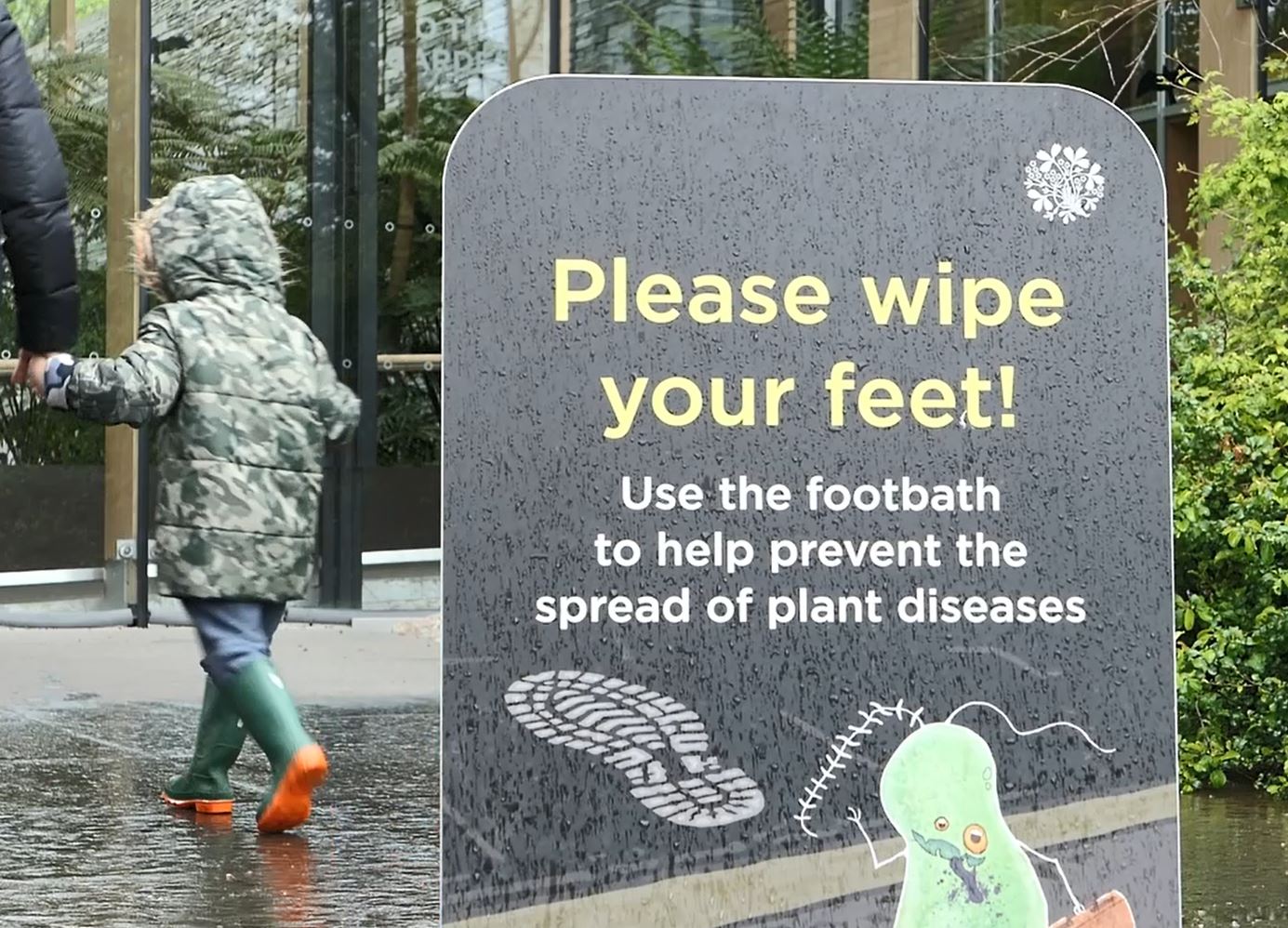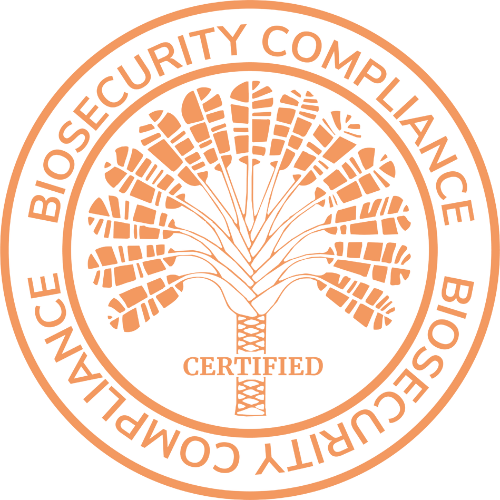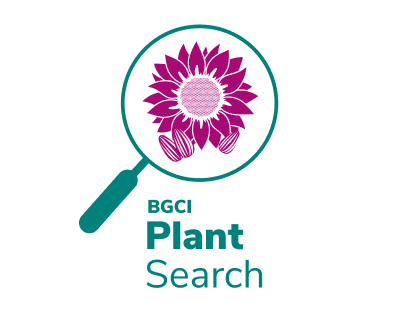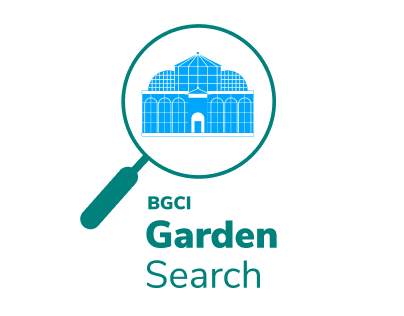Plant Health and Biosecurity
- Conservation Prioritisation
- Tree Conservation
- Seed Conservation
- Ecological Restoration
- Exceptional Species
- Plant Health and Biosecurity
Biosecurity
Biosecurity refers to the set of precautions taken by a botanic garden to prevent the introduction and spread of harmful organisms. Such organisms include non-native pests such as insects, and pathogens such as viruses, bacteria and fungi.
Pests and diseases can be transported between or within gardens and countries via a number of pathways, including:
- The introduction of live plant material (including seeds) into the garden as a result of collecting form the wild or exchange with other gardens;
- Carried into and around the garden on visitors’ shoes, dirty tools, kit, machinery and vehicles;
- Transferred with soil and organic material, such as leaf litter;
- Introduced with timber and wood packaging materials, such as shipping crates and pallets;
- Natural methods, such as wind and water.

Due to the way in which many plant collections are organised and because of the increased movement of plants and plant material, as well as mobility of staff and visitors, botanic gardens and arboreta can be especially vulnerable to the impact of invasive plant pests and pathogens. Such organisms can arrive in botanic gardens naturally, for instance through range extension, but introduction through human activity, whether deliberate or accidental, is the most common pathway.
In relation to receiving or sharing plant material, it is vital to ensure that neither the plant itself nor any associated pests or diseases will affect the collections of the botanic garden or the wider environment. Careful planning, preparation and management of plant material, good record keeping and robust procedures can help safeguard biodiversity and avoid serious environmental and economic impact.
Expertise
Apply for inclusion in BGCI's Plant Health and Biosecurity Directory of Expertise
Apply for Inclusion
Certification
Does your institution follow Plant Health and Biosecurity standards? Why not become BGCI approved?
Apply for CertificationInternational Plant Sentinel Network
Botanic gardens collections provide a unique opportunity in combating pests and diseases. Botanic gardens are estimated to contain 30% of all known plant species, many of which are exotic species. These specimens can therefore act as plant sentinels that help to predict which organisms are likely to pose a threat in the sentinel’s native range in the future. BGCI’s International Plant Sentinel Network aims for institutes to work together in order to provide an early warning system of new and emerging pest and pathogen risks.
Invasive Alien Species
Invasive alien species are organisms (animals, plants, microorganisms) that are introduced accidentally or deliberately into a natural environment where they are not normally found, with serious negative consequences for their new environment. They represent a major threat to native ecosystems, and their impacts are exacerbated by human activity, trade, habitat disturbance, pollution and climate change, amongst others. Globally, the impact of invasive alien species is second only to habitat destruction in terms of the most important cause of biodiversity loss.
Over the centuries, botanic gardens have introduced many thousands of plant species from around the world into cultivation. The majority of plant introductions to botanic gardens have been beneficial but inadvertently some have had characteristics which make them invasive in the region they are introduced. It is estimated that in Europe, 80% of current invasive alien plants were introduced as ornamental or agricultural plants. Invasive plants, which were introduced deliberately as ornamentals, include Japanese Knotweed (Fallopia japonica), common rhododendron (Rhododendron ponticum) and giant hogweeds (Heracleum spp.).
Botanic gardens need to be aware of their responsibilities to prevent future invasions. Several codes of conduct have been developed by and for botanic gardens, for example the Invasive Plant Species Voluntary Code of Conduct for Botanic Gardens and Arboreta and the European Code of Conduct for Botanic Gardens on Invasive Alien Species.
Examples Strategies
-
Accreditation Examples: Collection Policies
Services for Botanic Gardens / Publication, Tool / English, Spanish, French, Portuguese -
Accreditation Examples: Pest & Disease Strategies
Services for Botanic Gardens, Plant Conservation / Publication, Tool / English
Share





